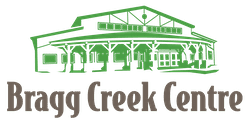GBC FireSmart Update
The 2020 wildfire season was relatively quiet for Bragg Creek and area residents in contrast to 2018 when there were tense hours while the McLean Creek fire burned or the weeks of hazy skies we endured in 2019 which served as a constant reminder that the threat of wildfire was real.
Who knows what the summer of 2021 will bring? The only certainty is that the risk posed by wildfire has not gone away. So, what can you do to reduce your wildfire risk? We can find an answer to this question in a study of the Fort Mac fire commissioned by the Institute for Catastrophic Loss Reduction (ICLR) entitled “Why Some Homes Survived”.
The ICLR study compared pairs of homes of similar type and exposure where one survived and the other did not. A hazard ranking scheme was developed to assist with the comparison. It was found that the vegetation fuel hazard allocated to the burned home was greater in every paired comparison – by a factor of 3 times in some cases. Landscaping practices stood out as the variable contributing most to fire spread and eventual loss of the home. Furthermore, home ignition was most often the result of wind driven embers, a.k.a. firebrands, that initially landed on and ignited vegetation and organic ground cover materials (e.g., bark mulch) close to the home.
The ICLR examined the density of firebrands, i.e., how many embers landed per square metre. The density was quantified by counting small burn holes combustible materials such as patio furniture fabric. In one case, a yard was showered by 600 embers per square meter which is an eye-popping 150,000 embers per hectare! Under such conditions, the ignition of bark mulch or juniper bushes would be a near certainty. It is worth pointing out that the fire front does not need to be close to your home for brand-initiated ignition to occur. Firebrands can cause spot fires at a considerable distance ahead of the main fire front. There are documented examples of fire spotting at 10km ahead of the fire. There is even anecdotal evidence of spotting up to 30km during an Australian bush fire.
The ICLR report offers several recommendations. Of these, the most compelling and easiest for homeowners to adopt are the FireSmart Canada vegetation management practices. FireSmarting your property starts with establishing a zone out to 1.5m from the home where all combustible materials are removed. The next step is applying landscaping practices out to 10m that do not serve as a path for fire to follow up to the home. And finally, work on the area between 10-30m. In this zone provide at least 3m of horizontal space between evergreen trees and remove branches to a height of 2m from the ground.
More information on FireSmarting your property and other tips to reduce your wildfire risk can be found on the Greater Bragg Creek FireSmart Committee Facebook page (www.facebook.com/GBCFireSmart). The site is also a great way to keep informed about local events such a Chipper Days where you can drop off branches for shredding. The GBC FireSmart Committee is planning for two Chipper Day events this summer. We hope to see there.

























